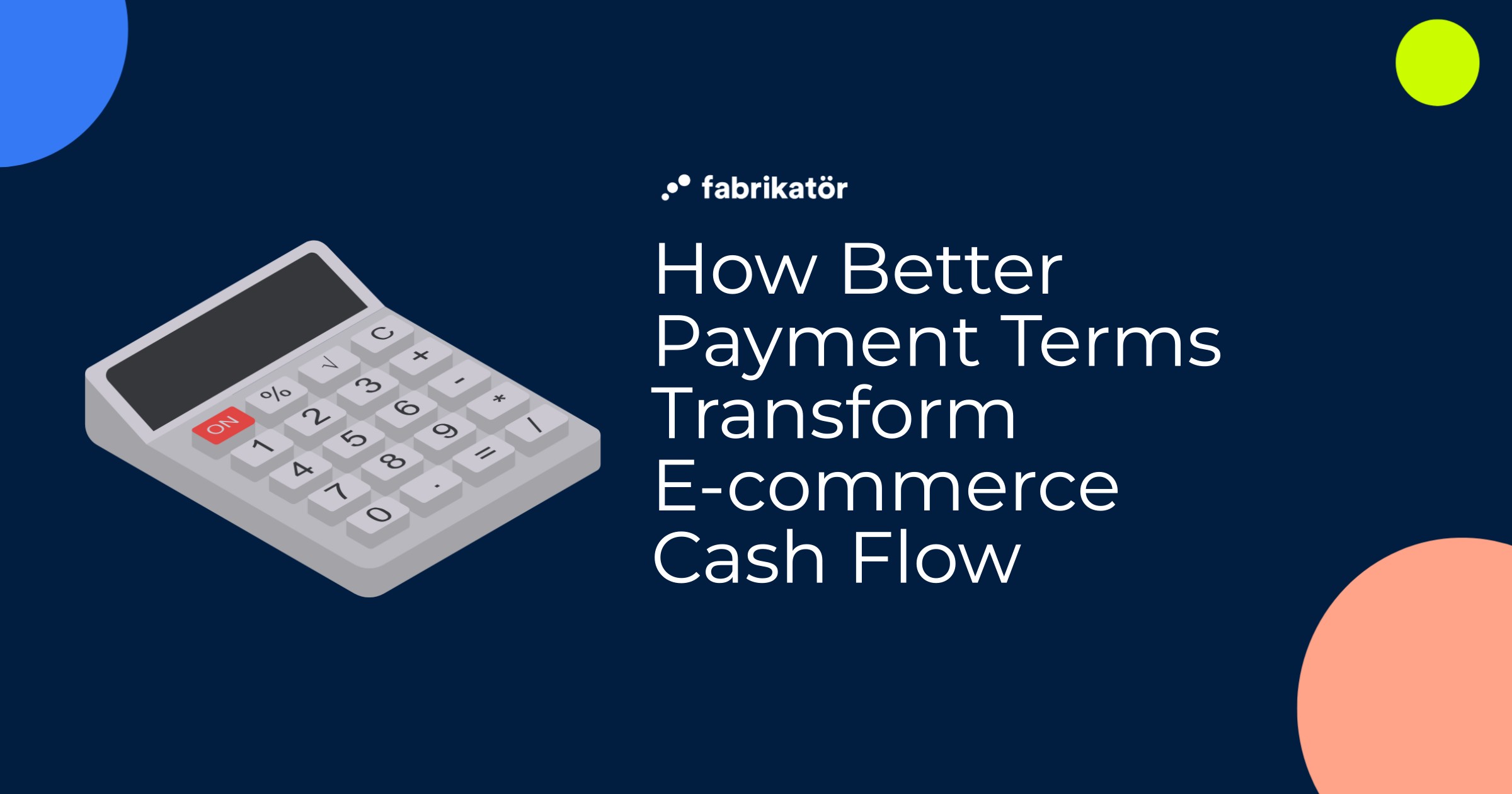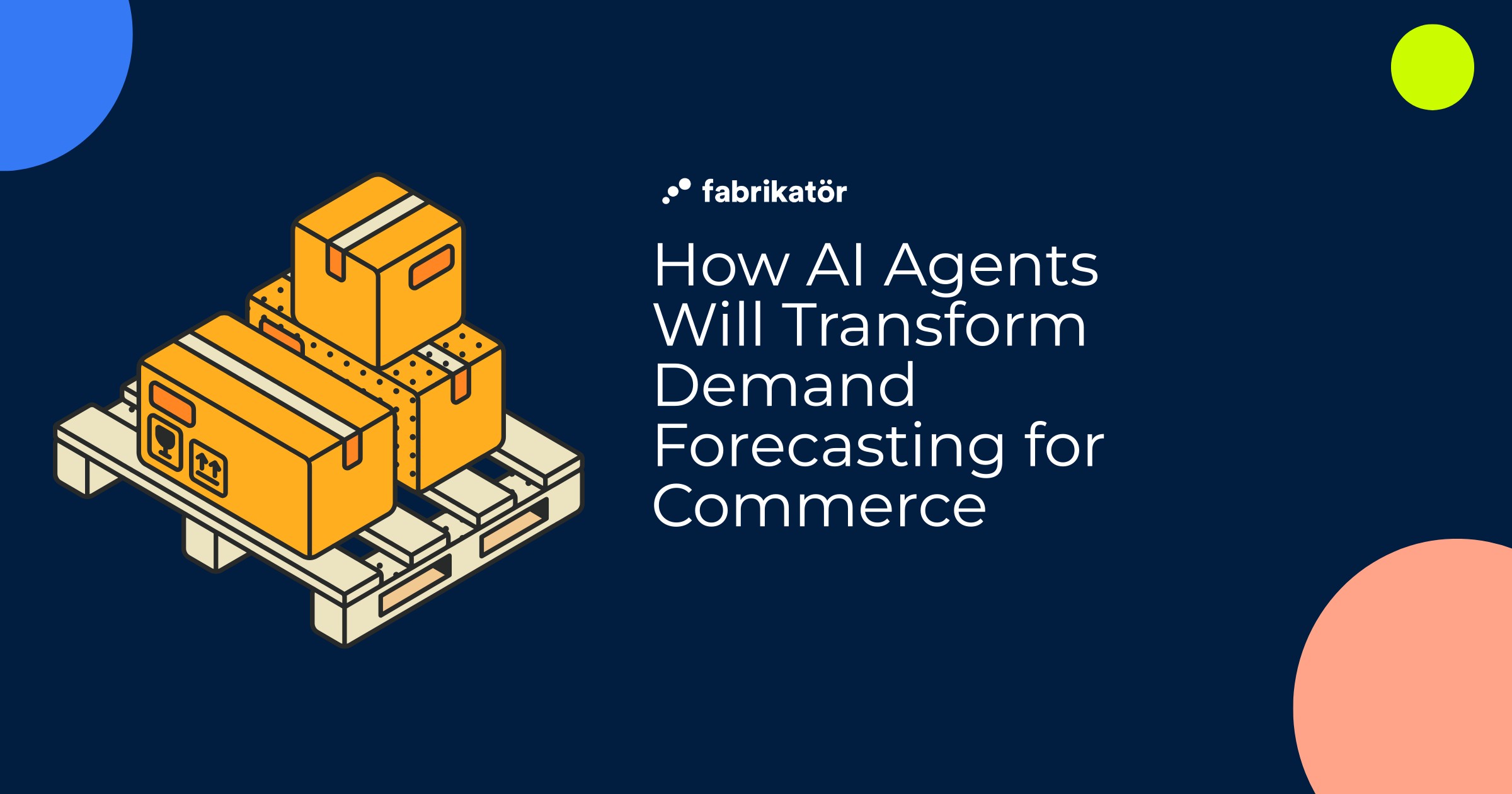Demand Forecasting in eCommerce: A Complete Guide

Isn't it fascinating how the eCommerce world keeps growing so fast? According to Statista, in 2023, online retail sales globally reached approximately $5.8 trillion. Projections suggest a significant 39% growth by 2027, surpassing $8 trillion.
As more people join the online shopping world, eCommerce store owners are more eager to understand future demand to stay competitive and maximize their profits. The analysis they make to predict sales demand helps them to make informed decisions about production, inventory, distribution, pricing strategies, customer relations, resource allocations, and more. That's why we are going to talk about demand forecasting today. ✍️
What is Demand Forecasting in eCommerce?
Demand forecasting, also known as inventory forecasting or sales forecasting, is a predictive analysis of future customer demand based on historical sales data and real-time inventory trends. It involves using advanced statistical techniques and algorithms to anticipate how much product a retail brand will likely sell in the upcoming periods.
In eCommerce, demand forecasting revolves entirely around predicting online sales. To make this prediction, companies analyze sales records, customer orders, inventory levels, pricing, promotions, seasonality, and other external factors.
Although the forecasting process is quite complex, why are eCommerce businesses dedicated to making sales forecasts? Let’s find out together.
Why is Demand Forecasting Important in eCommerce?
Forecasting demand is crucial for online businesses. It helps them prepare for how much of their products customers will want to buy. Even if the predictions aren't perfect, they're still valuable. Just knowing whether demand will increase, decrease, or stay the same helps businesses plan ahead. They can adjust their inventory levels accordingly, make more products if needed, or maintain their current operations. Moreover, in the D2C vs B2C landscape, demand forecasting plays a crucial role, as direct-to-consumer brands often need more precise predictions to manage inventory without relying on intermediaries.
Managing inventory effectively is also essential. Having too little stock can upset customers and result in lost revenue, while having too much can be costly in terms of storage and might not get sold, leading to financial losses.

For small online businesses that are growing, accurate demand forecasting is especially important. Unlike larger, more stable companies, they face greater uncertainty and risks. Mistakes in forecasting can lead to problems like being unable to fulfill orders or growing too quickly without enough resources.
Ultimately, incorrect demand forecasting can lead to financial difficulties, causing a business to run out of money sooner than expected.
Let's examine together which factors influence and shape sales forecasting.
Factors Affecting Demand Forecasting in eCommerce
Firstly, we need to understand that it's not always possible to predict demand with absolute certainty, nor is it necessary. However, it is important to make predictions as close to the reality as possible. While doing so, let’s review the factors affecting demand forecasting in eCommerce.

External Factors:
🍁 Seasonality: Predictable variations in demand based on the time of year are influenced by factors like weather and holidays. According to Statista, in 2023, holiday online retail sales in the US reached nearly $254 billion.
🏁 Competitors: In the world of eCommerce, the number of stores, and consequently competitors, is increasing every day. New competitors entering the market or launching new products can affect future demand.
🗺️ Geography: Variances in demand are based on the location of the target audience and their specific needs. For example, a beachside town might have a higher demand for sunscreen during the summer months compared to a mountain village.
🏦 Economy: Fluctuations in consumer spending and product demand in response to economic conditions such as recessions or booms. For instance, during a recession, consumers tend to cut back on spending, prioritizing essential items over luxury goods like expensive electronics. However, during an economic boom, people feel more confident and have more money to spend, so they tend to buy more luxury items.
Internal Factors:
🛍️ Types of Products and Services: Different products/services have varying demand patterns due to their usage frequency and lifecycle.
💸 Pricing Changes and Promotions: Marketing events like promotions or price changes can significantly impact demand. Take, for example, a clothing store in eCommerce reducing the price of summer dresses as winter approaches. While it may seem unlikely for summer dresses to sell well in winter, effective marketing activities can drive sales, highlighting the effect of pricing and promotion on sales forecasting
🆕 New Product Offerings: Introducing new products can disrupt demand for existing ones, requiring careful forecasting and adjustment of inventory levels.
By considering these factors, eCommerce businesses can enhance the accuracy of their demand forecasting and optimize inventory management strategies to meet customer needs effectively.
Now, let's delve into the benefits demand forecasting brings to eCommerce stores.
Benefits of Demand Forecasting in eCommerce
The benefits of inventory forecasting help you improve various aspects of your eCommerce business.

📦 Optimized Stock
With successful inventory forecasting, you will know the average stock you will need in the future. This means you don't need to pay for an extra storage space that you won’t use and prevents extra costs for your business.
🤝 Better Relationships with Suppliers
When you forecast your sales better, you can also plan your supply process more effectively. This leads to more controlled relationships with suppliers and potentially more profitable outcomes. For instance, if you anticipate high demand for a particular product, you can order more than usual and negotiate discounts or special promotions with your suppliers.
😊 Improved Customer Satisfaction
If you knew exactly how much inventory you should have, would you experience out-of-stock situations? Probably not. Inventory forecasting essentially means being prepared in advance for your customers' expectations. But let’s say, something unexpected happened globally, just like COVID-19. In such cases, you can utilize backorders to still meet customer demand. By gaining their trust and ensuring a smooth purchasing process, customers are more likely to return to your store repeatedly.
💰 Reduced Costs
By sales forecasting, businesses can optimize their inventory management and accordingly reduce the costs associated with over-investment, excess inventory, and stockouts.
⏰ Effective Time Management
By predicting future inventory demand accurately, businesses can better plan their production schedules, allocate resources more effectively, and shorten lead times. Effective time management through demand forecasting enables businesses to allocate resources strategically, focus on high-priority tasks, and capitalize on growth opportunities, ultimately enhancing operational efficiency and profitability.
Yes, demand forecasting has numerous benefits for your eCommerce store, but what about the challenges?
Challenges of Demand Forecasting in eCommerce

Challenges in demand forecasting for eCommerce include seasonality, demand volatility, data complexity, changing consumer preferences, and the complexity of multi-channel sales environments.
📅 Seasonality
eCommerce encounters frequent changes in consumer preferences, market trends, and demand uncertainty. Seasonal variations, promotional activities, and external factors significantly influence demand, posing challenges for accurate forecasting. Agility and adaptability are crucial to address these fluctuations effectively.
📊 Data Complexity
eCommerce generates vast amounts of data from various sources like website analytics, customer behavior, and sales transactions. Analyzing and integrating this diverse data is tough for forecasting. Traditional methods may struggle with the volume and complexity of eCommerce data.
🛍️ Complexity of Multi-channel Sales Environments
eCommerce businesses often sell across multiple channels and platforms, like websites, marketplaces, and social media. Each channel has its own demand patterns and inventory practices, making it hard to consolidate and forecast demand accurately. Managing inventory across these channels adds complexity to forecasting.
🔄 Returns & Exchanges
eCommerce's easy return and exchange policies add to demand volatility. Returns can disrupt inventory levels and forecasting accuracy, creating challenges in managing stock levels and fulfillment. Incorporating return rates and reverse logistics into forecasting models is crucial to handle these complexities.
👗 Launch of New Product
The launch of a new product in the same portfolio may lead to product cannibalization. It generally results in a loss of sales for existing products leading to unsold inventories, increased returns, and markdowns. Keep in touch with your product development team to stay updated before any such scenario arises.
🌐 Unexpected Global Events
Sudden spikes in demand due to the brand or product going viral on platforms like Instagram and TikTok are challenging to predict accurately. Additionally, global events like the Ukraine-Russia War and the pandemic, which impact the entire world, may not appear very predictable beforehand.
Well, but how exactly is demand forecasting measured? Are there specific methods?
How to Calculate Demand Forecasting in eCommerce?

There are primarily 2 categories for demand forecasting: quantitative and qualitative forecasting methods.
1. Quantitative Forecasting Methods
Time series analysis: It is used for quantitative forecasting methods, which involves techniques like regression analysis, machine learning algorithms, and collaborative filtering. These methods help you make predictions about the future based on your past data.
🤖 Regression Analysis: Regression Analysis identifies relationships between variables, while machine learning algorithms enable computers to make predictions based on data. Also, collaborative filtering techniques predict preferences based on similar user behaviors. Additionally, during demand forecasting, these methods below are not used independently; rather, they complement each other.
📈 Trend Projection: Trend Projection involves analyzing historical data to identify patterns or trends, which are then extended into the future. It assumes that past trends will continue, making it useful for forecasting when there's a clear direction in the data over time.
📊 Seasonal Index: Seasonal Index is a method used for recurring seasonal patterns in data. It involves quantifying the seasonal variations observed in historical data and using this information to adjust forecasts accordingly. This technique is beneficial when there are regular fluctuations in demand or other factors tied to specific seasons.
🔄 Naive Method: The Naive Method is a straightforward forecasting technique where future values are predicted based only on the most recent observation. It assumes that the most recent data point accurately represents future behavior, making it quick and easy to apply. However, it may not be suitable for data with complex patterns or irregular trends.
🚀 Straight-line Method: The Straight-line Method, also known as linear regression, involves fitting a straight line to historical data points and extending it into the future to make predictions. It assumes a linear relationship between the independent variable (usually time) and the dependent variable being forecasted. This method is useful when there's a steady, linear trend in the data over time.
2. Qualitative Forecasting Methods
Qualitative forecasting methods generally involve independent predictions derived from market changes, expert opinions on the subject, and data-independent forecasts, including your gut feeling. ✨ For example, imagine a new company entering your industry with a new product. In this case, forecasting based solely on existing data will not be enough. You can use the following methods in such situations.
📊 Market Research: Market research involves gathering information about customers, competitors, and market trends to understand the dynamics of a particular market.
🧠 Informed Opinion: This method requires knowledge, expertise, or experience in a particular industry. Experts analyze relevant information carefully to offer valuable insights or recommendations for decision-making.
🗣️ Delphi Method: The Delphi Method is a forecasting technique that gathers input from a group of experts to reach a consensus on future outcomes. Experts anonymously provide their forecasts through questionnaires or discussions. Feedback is collected and shared until a consensus is reached, reducing biases and uncertainties in forecasting.
📌 Reminder: To constitute valuable forecasting data, the combined result of these methods is used rather than any single one.
Is It Possible to Use Excel for Demand Forecasting?
Yes, but how efficient would it be? 👀
You actually can use Excel for demand forecasting, but it may not be the most efficient or accurate tool for this task. While Excel offers basic forecasting capabilities, it may struggle with handling large datasets, complex forecasting models, and real-time data updates. Additionally, Excel lacks advanced statistical algorithms and automation features found in dedicated inventory management tools, which can limit its effectiveness for sophisticated demand forecasting tasks.
Excel is not the ideal solution for demand forecasting, and also not suitable for managing your inventory, especially if you have a growing eCommerce store with a wide range of products.
📌 Learn more now: Transform Your Inventory eCommerce Management & Excel Limitations in Inventory Management.
Well, for your eCommerce store, how can you make the most accurate and comprehensive use of demand forecasting while considering all these aspects? 🤔 With an inventory management tool that effectively performs demand forecasting!
Software for Demand Forecasting in eCommerce
Fabrikatör is an inventory management tool that you can use fully integrated with Shopify. When it’s forecasting, Fabrikatör bridges the gap between demand and supply planning with data-driven insights, helping you make informed purchasing decisions. 📊 You can see real-time inventory, reduce out-of-stock and overstock, and plan reorders effortlessly at the perfect time. ⏰ Ultimately, Fabrikatör aims to improve margins by optimizing inventory management. 💰
.png)
When forecasting demand with Fabrikatör, you can:
✅ Leverage powerful AI algorithms,
✅ See insights from past sales and seasonal patterns,
✅ Seamlessly integrate your marketing events to align inventory and marketing efforts effectively,
✅ Make customizable plans to apply your market insights,
✅ Convert demand forecasting to purchase orders with a few clicks,
and more.
Book a demo now to learn much more!










